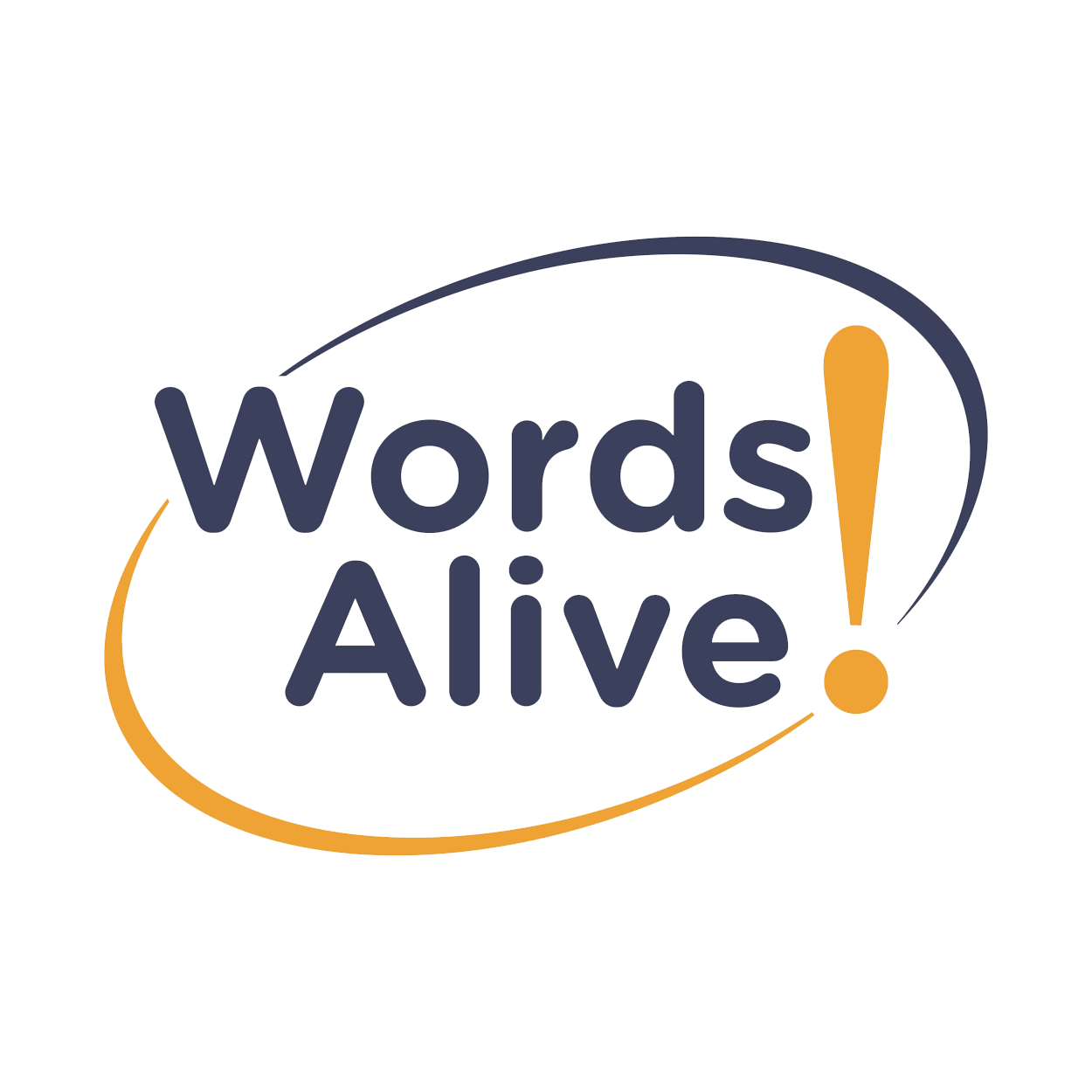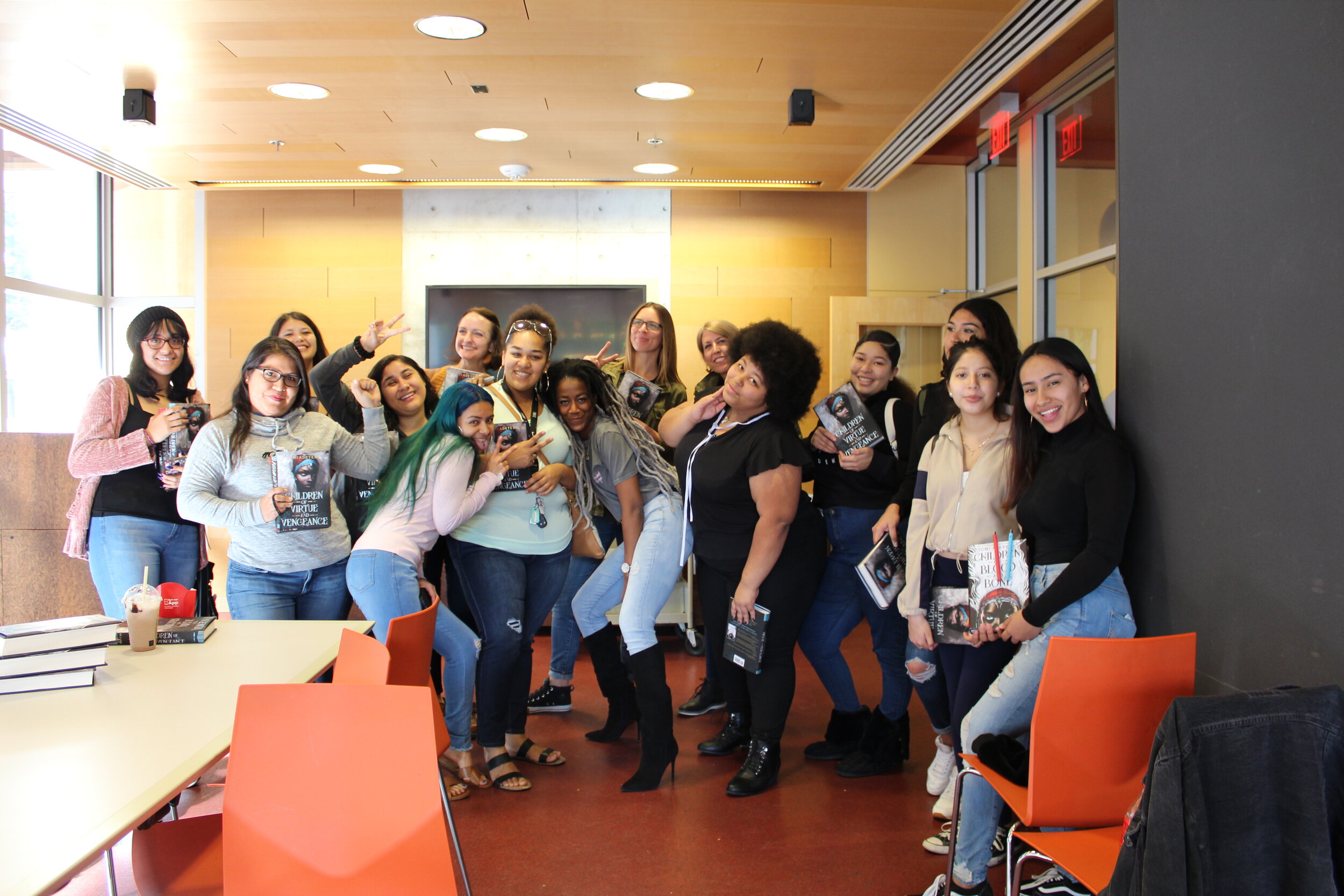Nara Duffie completed her first novel, The Monster Realm, 11 days before her 11th birthday. In this TED Talk, she gives advice on how to write your own story!
Sandhya Menon Discusses Why Reading is Amazing
It's the first day of the BookTube-A-Thon and Sandhya Menon is here to tell us why reading is so amazing!
Getting Real about Toxic Masculinity with Lamar Giles
Not So Pure and Simple toes the line between lessons author Lamar Giles learned growing up with the ones he thinks we need to embrace moving forward—and we get it. Toxic masculinity is a vicious cycle and this is a book that needs to be read.
Rick Riordan, Roshani Chokshi, Yoon Ha Lee, and Jennifer Cervantes Discuss Writing and Mythology
A lively discussion of writing and mythology featuring authors Rick Riordan, Roshani Chokshi, Yoon Ha Lee, and Jennifer Cervantes.
Robin Ha Gives a Tutorial on Drawing a Comic Panel
Aspiring artists (and anyone who appreciates art, so like, all of us), gather round! How does one become an artist, and a comic book artist at that?
Justin A. Reynolds and Angie Thomas Play Guess-the-Book with Only a Five-Letter Description
Laugh along with superstar authors Angie Thomas (THE HATE U GIVE) and Justin A. Reynolds (OPPOSITE OF ALWAYS) as they play a guess-the-book game!
Crash Course: Literature Analysis with YA author John Green
In 8 episodes, YA author John Green (The Fault in Our Stars, Turtles All The Way Down and many more!) dives into literature! The analyses and books chosen in this course are based on introductory college-level curriculum and the AP Literature guidelines. By the end of this course, you will be able to:
Use characters and setting to explore a range of values, beliefs, assumptions, biases, and cultural norms
Discuss the role of the narrator and how their perspective affects how readers experience and interpret a text
Recognize comparisons, representations, and associations that invite readers to interpret a text
Explain the function of significant events in a plot, as well as the contributions of structure, sequence, contrast, and conflict
Employ different lenses and focal points to read a text multiple ways and recognize the glorious ambiguity of literature
Discuss how different texts employ time as a theme
Find all 8 episodes here!
Exclusive Writing Lesson from Mark Oshiro: Turn an Idea Into a Story
Here at Words Alive, we’re huge fans of young adult author Mark Oshiro. In 2018, our teen students fell in love with his debut novel Anger is a Gift for how relevant it was to their lives. We can’t wait to read his new novel Each of Us a Desert when it’s released in September.
As a special treat just for Words Alive, Mark recorded an hour-long writing lesson about how to turn an idea into a story.
Text summary of Mark Oshiro’s Writing Lesson:
Most novelists and short story writers don’t just sit down and start writing. There are many steps before the writing even begins, and Mark refers to these as “prewriting.” First, you need an idea. Ideas can come from anywhere: everyday life, school or work, common anxieties and conflicts, dreams, current events, or even old projects that didn’t work before. He encourages writers to keep a small notebook handy to write down ideas as they occur and to include as much detail as possible. Once you have an idea, mull it over. This can happen in the shower, during a walk, while you play video games, or any time your mind can wander. Explore the idea in any way you want. Give yourself the freedom to create and have fun.
Next, Mark explains a few exercises to help develop ideas into stories:
Free Writing: At this point, don’t feel you have to write the story, just WRITE. Write a letter to yourself, write as a character, write to just explore the idea, write with the full knowledge that nobody will see it. Just WRITE. Did he mention WRITE?
The Snowflake Method (this tends to work better for a novel-length work): Start with a one sentence summary. Expand that sentence to a paragraph (4-5 sentences), now expand to a page, add in multiple plots; nothing is permanent. Do the same for each character. Do the same for each plotline. The story starts to spiral out in complexity like a snowflake, and you will begin to see the layers.
Character Profiles: Some authors discover their story through characters instead of plot. While this is not a technique Mark personally employs, he has a writer friend who starts by writing a bio of every character. Another writer figures out what each character is wearing and uses that to figure out the plot. Yet another illustrates the characters.
Research: For Mark, this is Step 2 after free writing and having a general idea of the story. The amount of research will depend on how well you know your subject. The library is a great resource for this, as is the internet. Reading similar books or stories is research, too! Be familiar with authors who are doing the kind of writing you want to do.
Outlining: The outline doesn’t have to be formal; it takes the idea and tries to break it down into what Mark calls “story beats.” What are the important points that the story must hit? Not the details, but the plot points. Outlines are not set in stone. They are a guide, but often an author discovers new things along the way. Again, this is a tool that works for him, not for every writer. Some don’t outline or outline later in the process.
His parting advice:
Write. Write. Also, WRITE. It could take years, but you will be learning the whole time.
Finish a project. This is why he recommends starting with a short story. It’s easier to finish, and it’s important to get used to the feeling that you can finish what you start.
A huge thanks to Mark for recording this writing lesson exclusively for Words Alive, we’re big fans of Mark Oshiro! Here’s a little throwback to the time our students got to meet him!
The Poet X performed by author Elizabeth Acevedo
Tomi Adeyemi on The Tonight Show
Here at Words Alive, we’re big fans of San Diego-based author Tomi Adeyemi! Here’s a little throwback to the time our students got to meet her!
Writing Tip from author Elly Swartz
Read Aloud: House Arrest by author KA Holt
Hogwarts Digital Escape Room
Illustrate Your Own Story
Are you stuck at home entertaining little brothers and sisters? Try drawing a story for them! Check out this video from illustrator Christian Robinson who talks about the power of drawing children’s books and why representation matters.
Writing Class by author Kelly Yang (Front Desk)
Get to Know Author Mark Oshiro (Anger is a Gift)
Draw Everyday with JJK (Hey Kiddo)
Jarrett J. Krosoczka, author and illustrator of the YA hit Hey Kiddo, offers daily drawing lessons on his YouTube channel.







